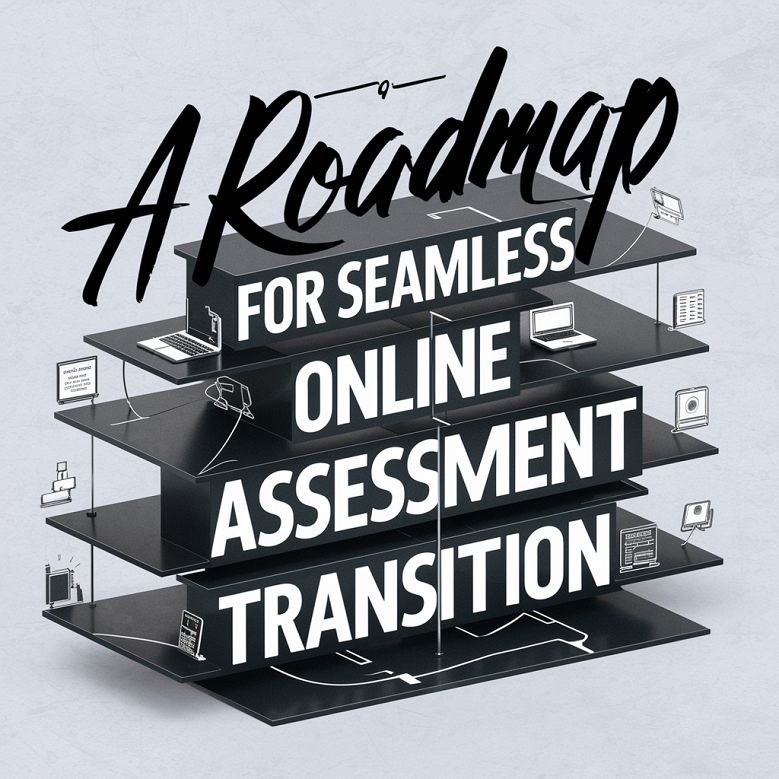One of the most significant shifts in the education and corporate sectors has been the transition from traditional paper-based assessments to digital formats. The benefits are clear in the modern context — improved efficiency, access to real-time data, and a more engaging learning and evaluation experience for users.
But how does an institution smoothly make this transition? Whether you’re a school administrator or a business leader, the process can seem daunting.
This guide is your bedrock, offering a clear roadmap to a successful switch to digital assessment frameworks.
Understanding the Need for Change
The first step towards a digital assessment transition is understanding the need. Recognising shortcomings in the existing system can be the impetus required to initiate change.
It can be a combination of factors — from sustainability concerns regarding paper usage to the necessity of integrating assessments with e-learning platforms.
Detecting Pain Points
Start by identifying what isn’t working.
It could be the time-consuming nature of manual grading that’s hampering the timely feedback process for students, or the lack of advanced reporting and analysis features for administrators.
Benefits of Digital Assessments
Highlight the advantages of moving online.
These might include the ability to create adaptive assessment pathways, the provision of multimedia support for questions, and the opportunity for instant feedback to encourage continuous learning.
Technology Selection and Adoption
Choosing the right technology is critical. It must align with the unique needs of your institution’s assessment framework, be user-friendly, and offer robust security features.
Finding the Right Fit
Evaluate different assessment platforms, considering their features, costs, and how well they integrate with existing systems and curricula.
Look for those with user testimonials and a track record of successful transitions, such as Janison featuring a great case study of a successful online assessment transition.
Training and Support
Once a platform is selected, the focus shifts to adoption. This involves comprehensive training for staff and users, as well as the provision of ongoing support.
Content Development and Curation
With a digital assessment platform in place, attention turns to content. The design of online assessments can significantly impact their effectiveness and the user experience.
Redefining Assessment Content
Transitioning to an online environment provides an opportunity to redefine assessment content. Consider how to leverage the interactive potential of digital media to create more engaging and pedagogically sound assessments.
Collaboration and Sharing
The beauty of digital content is its ease of collaboration and sharing. Encourage educators and trainers to share and adapt assessment material, fostering a culture of continuous improvement and exchange of best practices.
Data and Insights – The New Norm
One of the greatest strengths of online assessment is the ability to generate and analyse data at scale. This shift is fundamental, moving from a focus on testing to one of assessment for learning.
Utilising Real-Time Analytics
Explore the capabilities of your chosen platform for real-time analytics. These insights can provide early intervention opportunities for struggling learners and highlight areas where teaching or training programs are excelling.
Data-Driven Decision Making
Foster a culture of data-driven decision-making among educators and administrators. Use the data to refine curricula, personalise learning pathways, and identify future trends in assessment needs.
Security and Integrity
In any assessment environment, maintaining the security and integrity of the process is paramount, guarded by the platform’s technological infrastructure and user behaviours.
Tech-Savvy Integrity Measures
Learn about the platform’s built-in security measures, such as identity verification, question randomisation, and lock-down browser support to prevent cheating.
User Education on Best Practices
While digital platforms may have sophisticated security features, user behaviour is just as important. Promote awareness and education around best practices for assessment integrity in the digital space.
Continuous Review and Improvement
The final phase of the transition is ongoing review and refinement. This process ensures that the digital assessment system evolves in response to user feedback and technological advancements.
User Experience Feedback Loops
Institute regular feedback sessions with students, educators, and trainers to gauge the user experience and identify areas for improvement. Implement an iterative development cycle to continuously enhance the platform.
Staying Ahead of the Curve
Keep an eye on the horizon for emerging assessment technologies and methodologies. Staying informed and adaptable will help ensure that your digital assessment processes remain at the cutting edge.
In Summary
The transition to digital assessments can be a complex undertaking, but following this roadmap will help you plan and execute a successful switch.
From understanding the need for change to continuous review, each step is vital in ensuring that the switch is not just a change in medium, but a transformation in your organisation’s approach to assessment and, in turn, learning.






